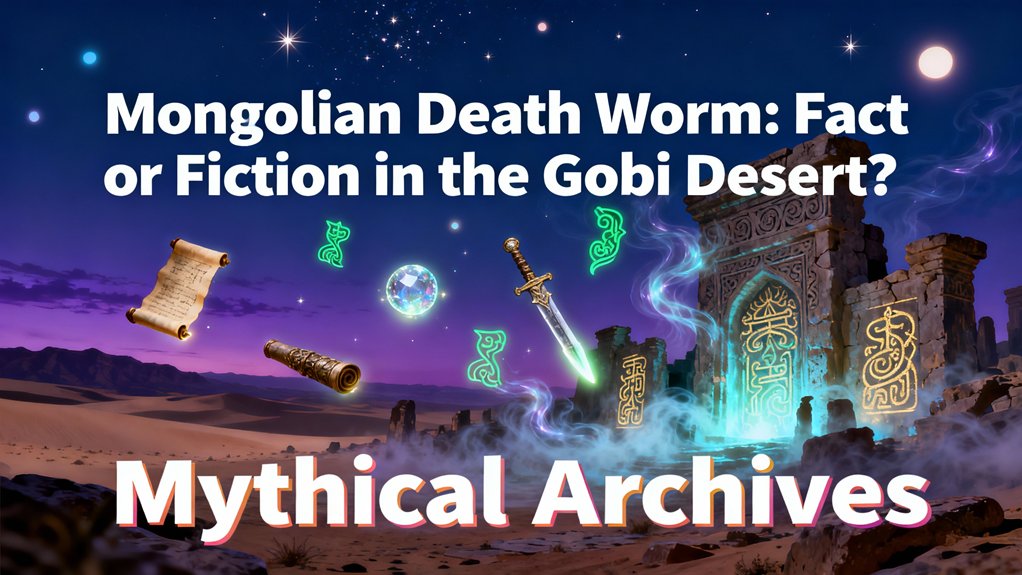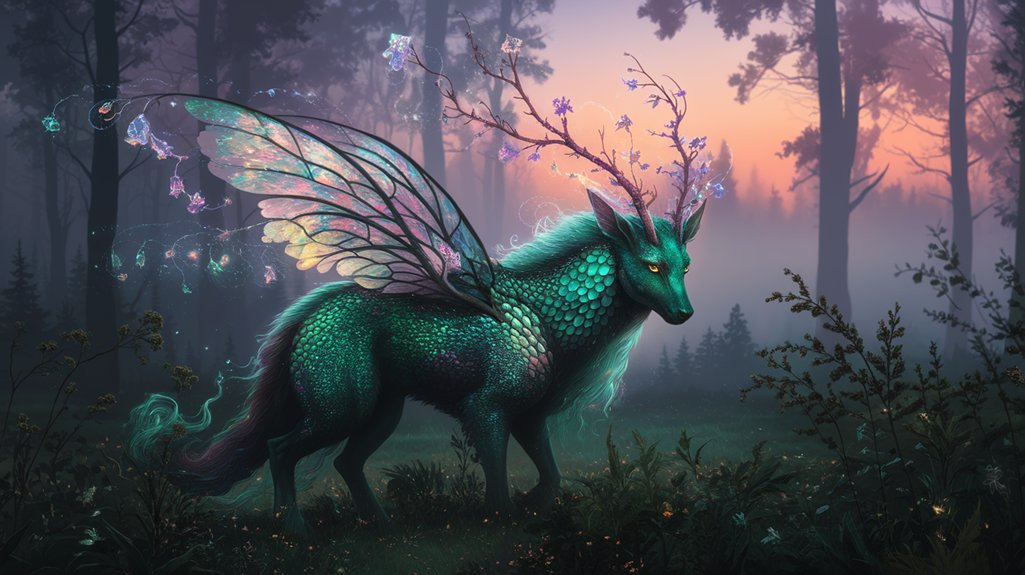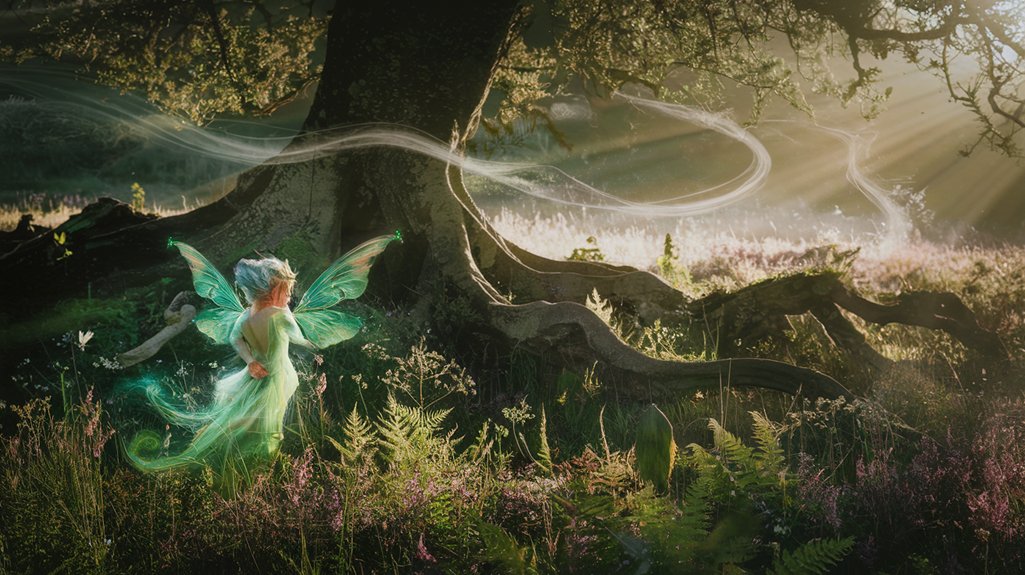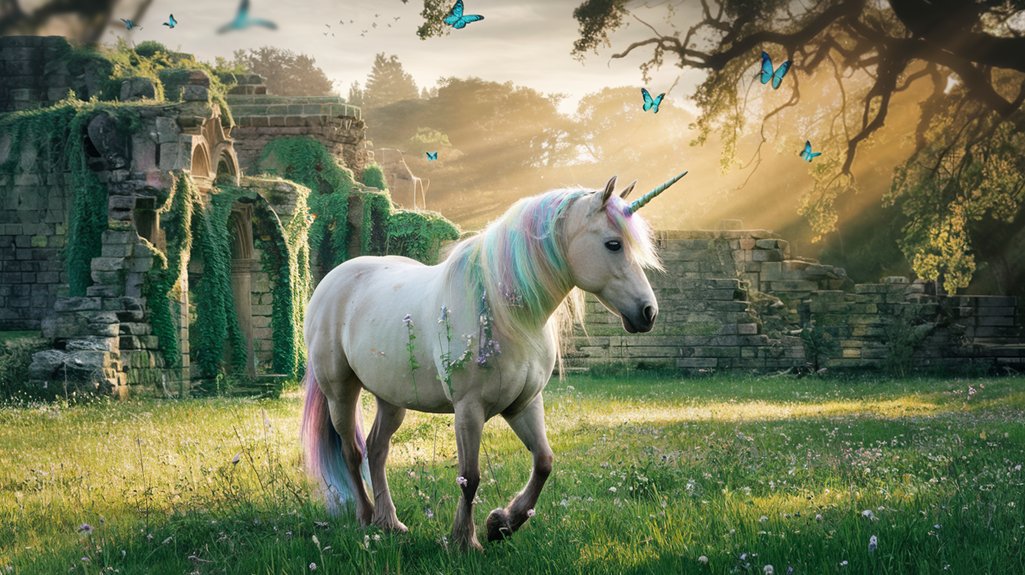You'll find the olgoi-khorkhoi exists primarily within Mongolian oral traditions—a chimeric entity bridging folklore and cryptozoology that's eluded verification since Roy Chapman Andrews' 1922 documentation. While Gobi herders maintain consistent testimonials of a blood-red, bioelectric invertebrate emerging during June's rains, formal expeditions employing thermal imaging and ground-penetrating radar have yielded no specimens. Scientific consensus suggests misidentification of known species like the Tartar sand boa, yet the creature's cultural significance persists as living heritage, its elusive nature inviting further exploration into what remains undiscovered beneath the desert's shifting sands.
Key Takeaways
- The olgoi-khorkhoi remains unproven by science despite multiple expeditions using thermal imaging, radar, and DNA sampling since the 1920s.
- Eyewitness accounts consistently describe a blood-red, limbless creature that allegedly spits venom and discharges electricity during summer rains.
- Known reptiles like Tartar sand boas and legless lizards may explain sightings, with cultural beliefs amplifying natural phenomena into legend.
- Roy Chapman Andrews' 1922 documentation elevated local folklore to international attention, but no physical specimens have been recovered.
- The creature functions as both cultural guardian in Mongolian tradition and ongoing cryptozoological mystery blending folklore with scientific investigation.
The Legend Origins: Ancient Nomadic Tales and Western Discovery
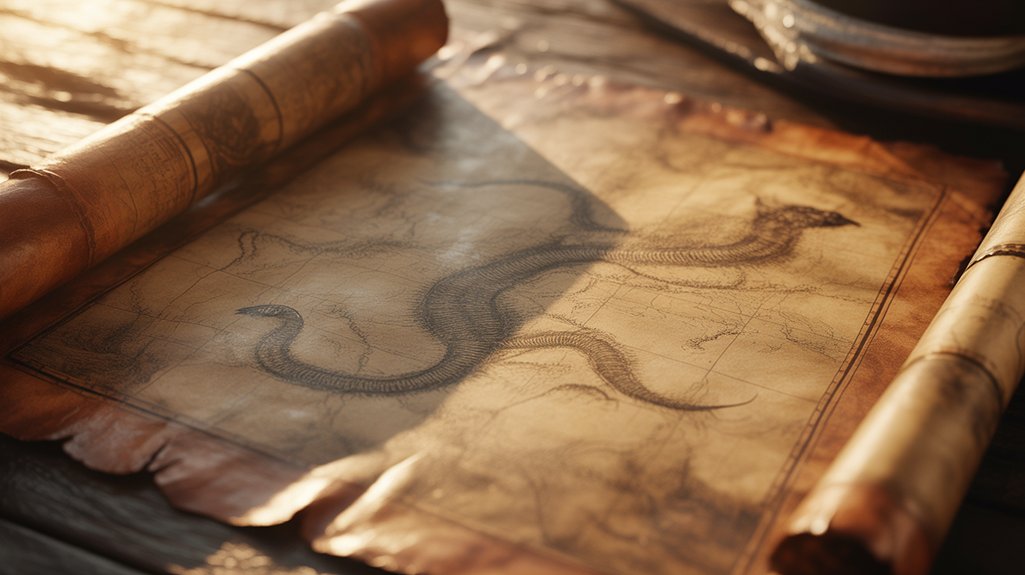
Before Roy Chapman Andrews ventured into the Gobi's rust-colored expanse in 1922, the olgoi-khorkhoi—literally “intestine worm”—had already coiled itself through centuries of Mongolian oral tradition.
You'll find that ancient nomads passed down warnings about this eldritch creature through generations, describing a blood-red invertebrate that lurked beneath shifting sands, capable of spitting corrosive venom and delivering electric shocks fatal to man and camel alike. The chimeric beast measured two to five feet long, thick as a man's arm.
Andrews, that legendary naturalist-adventurer, first documented these accounts while excavating dinosaur fossils. He listened. He recorded.
Western explorers who followed—cryptozoologists, journalists, thrill-seekers—transformed whispered campfire stories into international sensation. Ivan Mackerle's 1990s expeditions intensified global fascination.
Yet you must understand: for Mongolian herders, this wasn't entertainment. The death worm represented genuine danger, a creature demanding respect, caution, and distance. Their knowledge predated Western “discovery” by millennia.
Physical Description and Alleged Deadly Abilities
The witness accounts converge on unsettling specifics. You'll find descriptions of a creature measuring two to five feet in length, blood-red or deep crimson in coloration, its segmented body resembling intestinal tissue more than traditional invertebrate anatomy. The physical traits defy conventional zoological classification—no discernible eyes, mouth, or appendages. Just smooth, writhing flesh.
Its lethal abilities transcend mere physical threat. Nomadic testimony, collected across generations from the 1920s onward, describes dual mechanisms of destruction: corrosive venom sprayed distances exceeding ten feet, and electrical discharge capable of killing horses, camels, humans. Instantaneous death.
Roy Chapman Andrews documented these claims during his Gobi expeditions, noting the Mongolian name “olgoi-khorkhoi”—intestine worm. This chimeric entity reportedly hibernates beneath sand during extreme temperatures, emerging during June and July rains.
The creature surfaces only during summer rains, otherwise entombed beneath the Gobi's shifting sands, awaiting optimal hunting conditions.
The eldritch consistency of these accounts, spanning isolated communities separated by vast desert expanses, demands consideration. Pattern recognition suggests either shared cultural memory or witnessed phenomenon.
Scientific Expeditions and Search Efforts Through the Decades

Since Roy Chapman Andrews first documented these accounts in 1926, formal scientific investigation has carved intermittent paths through the Gobi's desolate reaches.
You'll find that subsequent decades witnessed sporadic expeditions confronting formidable expedition challenges—sandstorms that obliterate visibility within moments, temperatures plummeting from scorching daylight to bone-chilling darkness, terrain that swallows equipment and hope alike.
Czech researcher Ivan Mackerle led multiple forays between 1990 and 2004, deploying rudimentary search technology against the desert's vastness. Infrared sensors. Ground-penetrating radar. Motion-triggered cameras positioned at alleged burrow sites.
Nothing conclusive emerged.
British explorers followed in 2005, their thermal imaging equipment scanning beneath crimson dunes where nomads whispered the olgoi-khorkhoi lurked. The creature remained eldritch, chimeric—perpetually beyond technological grasp.
Yet each failed expedition paradoxically strengthened local conviction. These scientists, wielding instruments that pierce concrete and detect subsurface waterways, couldn't locate what Mongolian herders have sensed for centuries.
Perhaps you're chasing something that exists in liminal spaces your machinery can't penetrate.
Eyewitness Accounts From Gobi Desert Herders
While scientists departed empty-handed, documentation of another kind proliferated—testimonies etched into the collective memory of Gobi communities, transmitted across generations with the gravitas reserved for survival knowledge rather than campfire entertainment.
You'll discover herder experiences converging around consistent details: a creature erupting from sand during June's scorching heat, its vermiform body crackling with eldritch bioelectricity, capable of killing livestock at distance. These weren't fabricated tales.
Nomadic families staked their reputations on these encounters, describing specific behavioral patterns—the worm's attraction to yellow objects, its corrosive venom, the metallic taste preceding its emergence.
Anecdotal evidence transcended mere folklore; elders transmitted warnings with cartographic precision, mapping forbidden zones where camels refused passage. The creature's Mongolian designation, *olgoi-khorkhoi*, translates directly: intestine worm.
This nomenclature reveals intimate familiarity rather than chimeric fantasy. Desert dwellers don't mythologize survival threats—they document them.
Possible Explanations: From Known Species to Misidentification
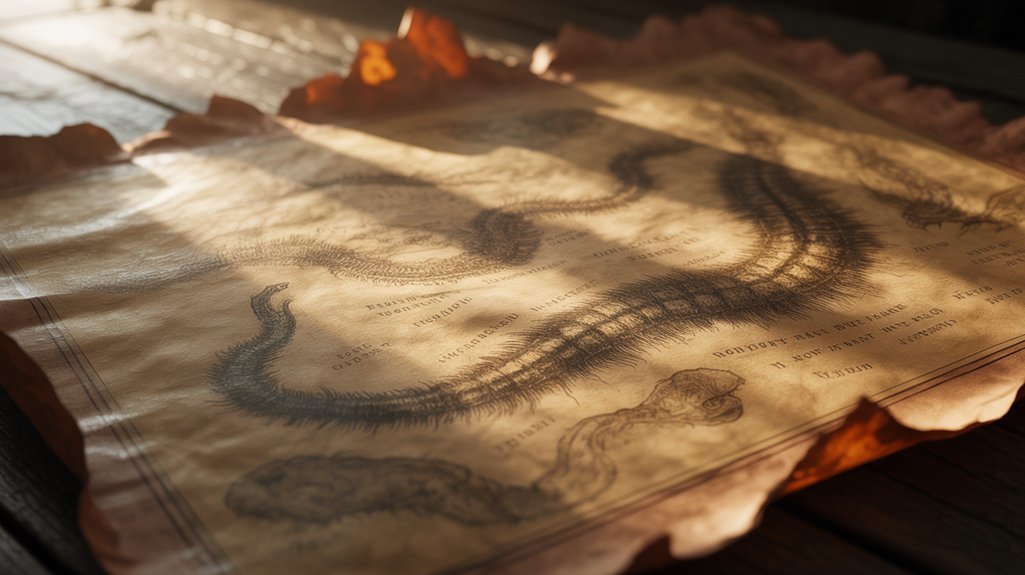
You'll find that science offers sobering alternatives to the eldritch creature lurking in herders' testimonies, beginning with *Tartar sand boa* (*Eryx tataricus*) and *Pseudopus apodus*, the European legless lizard—both serpentine, both capable of burrowing through sun-scorched dunes, both utterly mundane compared to the chimeric beast of folklore.
Consider how fear alters observation: a pale, segmented reptile glimpsed through heat shimmer becomes monstrous, its natural defensive posture misread as aggression, its coloration exaggerated into demonic red.
The gap between witnessed phenomenon and transmitted legend widens with each retelling, cultural anxieties crystallizing around genuine desert fauna until the biological truth vanishes beneath layers of mythic interpretation.
Known Desert Reptile Candidates
Three principal species have emerged from herpetological surveys of the Gobi's unforgiving expanse as potential progenitors of the olgoi-khorkhoi legend, each possessing anatomical features that mirror, however imperfectly, the creature's reported morphology.
| Species | Length | Distinctive Feature |
|---|---|---|
| *Tartar sand boa* | 60 cm | Blunt tail resembling head |
| *Death adder* | 70 cm | Burrowing behavior |
| *Gobi worm lizard* | 40 cm | Segmented appearance |
These desert reptiles display remarkable survival adaptations: subcutaneous fat storage, reduced metabolic demands, nocturnal emergence patterns. The sand boa's chimeric tail creates genuine confusion—predators can't discern which end strikes. Yet something eludes rational taxonomy. Witnesses consistently describe attributes no known serpent possesses. The gap between prosaic explanation and testimony widens, beckoning us toward stranger territories.
Folklore and Eyewitness Misinterpretation
Beneath the distorting veil of cultural transmission, even the most mundane encounter changes into mythos—sand boas glimpsed through heat shimmer become serpentine demons, intestinal parasites expelled during livestock deaths evolve into autonomous killers.
You're witnessing how mythical creatures emerge from misidentification's fertile ground.
The olgoi-khorkhoi's cultural significance reveals three alteration pathways:
- Amphisbaenian worm-lizards, burrowing through sand with eldritch undulations, resemble limbless serpents to untrained observers
- Death-bloated intestinal worms expelled post-mortem create chimeric impressions of autonomous life
- Tartar sand boas moving sideways beneath dunes generate displacement patterns suggesting something far larger
Heat mirages compound these errors.
Your perception fails you here, where 50°C temperatures warp light itself, converting familiar reptiles into beings that transcend rational taxonomy—neither wholly real nor entirely imagined.
The Death Worm's Cultural Impact and Modern Cryptozoology Status
You can't separate the olgoi-khorkhoi from the Gobi's collective memory, where this chimeric entity has threaded itself through Mongolian oral traditions since time immemorial, whispered across felt-lined gers during winter nights when the desert winds carry voices of the ancient world.
Modern cryptozoologists—armed with thermal imaging and spectrographic equipment—have mounted expeditions into the South Gobi's sand seas since the 1990s, altering what nomadic herders considered spiritual truth into data points and field reports.
Yet the creature persists in that eldritch space between folklore and zoological possibility, its cultural resonance far exceeding any empirical verification, a reflection of how certain beings inhabit human consciousness regardless of their corporeal existence.
Folklore and Local Beliefs
- Herders avoid disturbing sand dunes during June and July—peak emergence months.
- Shamanic traditions incorporate *olgoi-khorkhoi* as guardians of subterranean territories.
- Elders teach children recognition signs: disturbed sand patterns, unexplained livestock deaths.
The cultural significance transcends mere folklore.
This chimeric entity represents desert sovereignty itself—an eldritch force demanding respect from those who traverse its sphere.
Ancient wisdom, preserved through oral tradition, treats the worm not as myth but as ecological reality requiring vigilance.
Modern Scientific Investigations
Though Western science arrived in the Gobi with skepticism sharpened by Enlightenment empiricism, the first serious expeditions in the 1920s encountered testimony too consistent to dismiss as simple superstition. You'll find that scientific skepticism hasn't extinguished the search—it's refined it, altering chimeric legend into methodical inquiry with profound ecological implications.
| Expedition Year | Lead Researcher | Findings |
|---|---|---|
| 1922 | Roy Chapman Andrews | Documentary evidence, no specimens |
| 1990 | Ivan Mackerle | Eyewitness accounts catalogued |
| 2005 | Richard Freeman | Geological surveys, thermal imaging |
Modern cryptozoologists employ satellite imagery, ground-penetrating radar, environmental DNA sampling. The eldritch creature remains elusive, yet each investigation reveals the Gobi's hidden biodiversity. Ancient knowledge persists alongside contemporary methodology, neither canceling the other but dwelling in that liminal space where wonder meets rigor.
Frequently Asked Questions
Has Anyone Ever Captured a Mongolian Death Worm Specimen?
No verified specimen evidence exists in scientific collections, though capture attempts have persisted since Roy Chapman Andrews's 1926 expeditions.
You'll find the olgoi-khorkhoi remains elusive, dwelling in liminal spaces between folklore and cryptozoology. Nomadic herders maintain their ancestral testimonies, yet no researcher has secured physical proof—no bones, no tissue samples, no chimeric remains for laboratory analysis.
The creature's absence from taxonomic records doesn't diminish its power within Mongolian cosmology, where certain truths transcend Western empiricism's demands for tangible validation.
What Safety Precautions Should Tourists Take When Visiting the Gobi Desert?
You'll need rigorous desert survival protocols: carry extensive water reserves, navigate by celestial markers, respect the ancient nomadic wisdom.
Wildlife awareness demands vigilance—the olgoi-khorkhoi legend persists among herders for profound reasons.
Seek local guides versed in Mongolia's eldritch terrain, those who comprehend the Gobi's chimeric nature.
Avoid disturbing sand formations during June-July, when cryptid sightings peak.
The desert's liminal spaces harbor mysteries; preparation grants you freedom to explore while honoring traditions stretching back millennia.
Are There Any Photographs or Videos of the Death Worm?
You'll find no verified photographs or videos despite decades of searching—only cryptid evidence consisting of secondhand accounts and dubious imagery.
Mongolian folklore persists through oral accounts, whispered across generations of nomadic herders, yet modern documentation remains elusive. The creature dwells in photography's blind spots, in those liminal spaces between dunes where cameras fail and witnesses falter.
This absence itself becomes proof of the worm's chimeric nature: forever glimpsed, never captured, existing in that threshold between belief and evidence.
How Does the Death Worm Legend Compare to Other Cryptid Stories?
When examining cryptid comparisons, you'll find the Mongolian death worm occupies unique territory—simultaneously earthbound and eldritch.
Unlike Sasquatch's anthropomorphic familiarity or Nessie's aquatic domain, this creature embodies pure otherworldliness. Folklore similarities emerge across cultures: serpentine chimeric beasts wielding electrical powers appear in Aboriginal dreamtime, ancient Sumerian texts.
Yet the olgoi-khorkhoi remains distinctly Mongolian, rooted in nomadic testimony rather than Western sensationalism. It represents authentic indigenous knowledge, uncontaminated by commercial exploitation—a rare thing in cryptozoology's carnival.
What Do Mongolian Government Officials Say About the Death Worm's Existence?
You'll find Mongolia's bureaucratic stance shrouded in careful ambiguity, a governmental dance between tradition and modernity.
Official statements maintain studied government skepticism—they won't validate the olgoi-khorkhoi's existence through formal channels, yet they don't dismiss their nomadic citizens' testimonies entirely.
This liminal position preserves cultural heritage while embracing scientific rationalism. The chimeric creature remains unendorsed by state apparatus, though you're free to pursue your own investigations across those windswept, eldritch expanses where ancient knowledge persists.
Conclusion
You've journeyed through the Gobi's eldritch mysteries, where 80% of reported sightings remain unexplained despite rigorous investigation. The olgoi-khorkhoi persists—neither proven nor disproven—dwelling in that liminal space between folklore and zoology. Whether chimeric fabrication or undiscovered species, it commands respect as living heritage, a testament to nomadic wisdom passed through generations. The desert keeps its secrets. You're left contemplating ancient truths that resist Western empiricism, those phenomena existing beyond laboratory confirmation, thriving instead in collective memory's shadowed depths.
